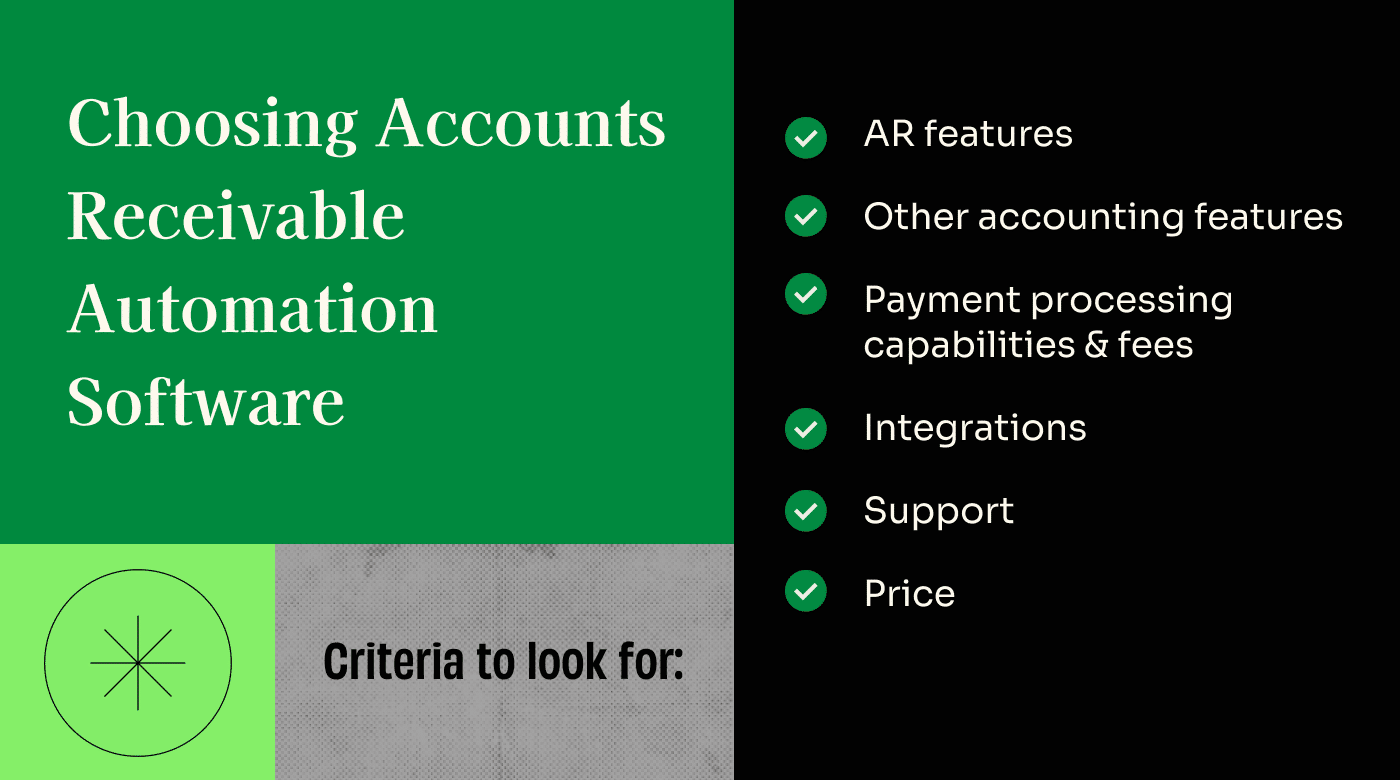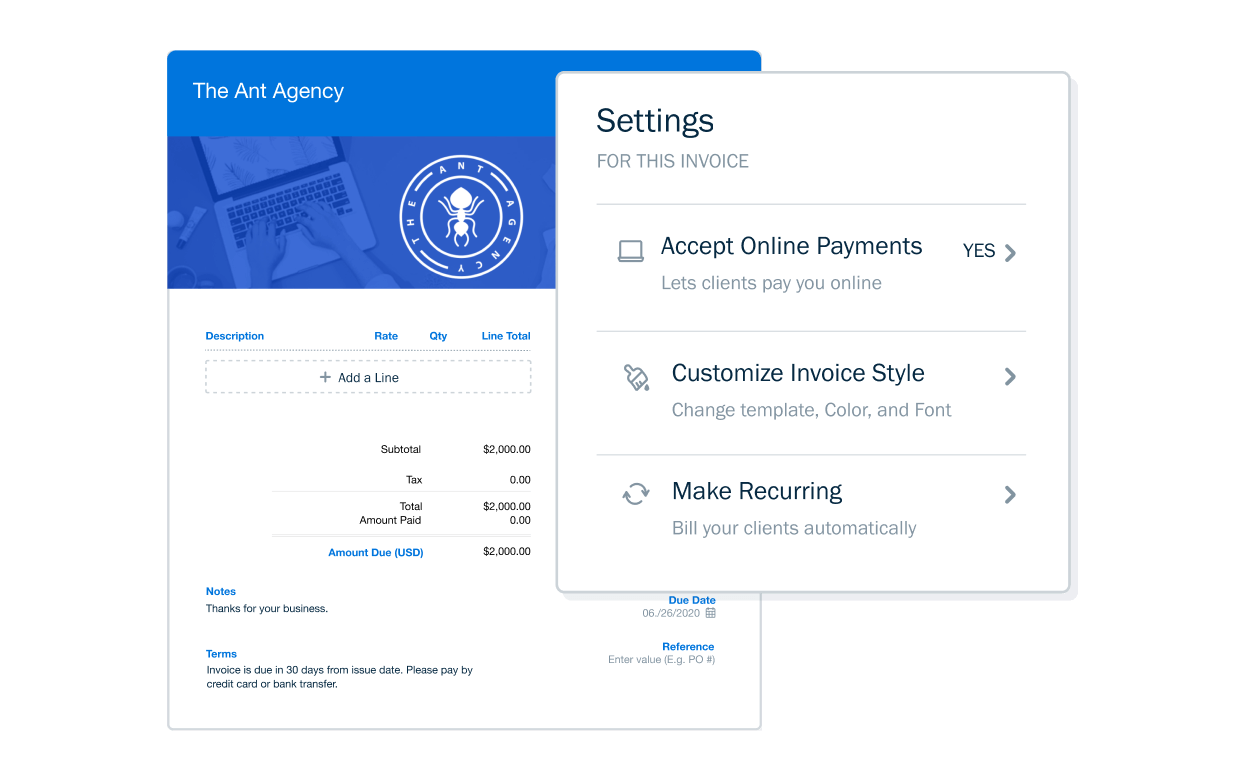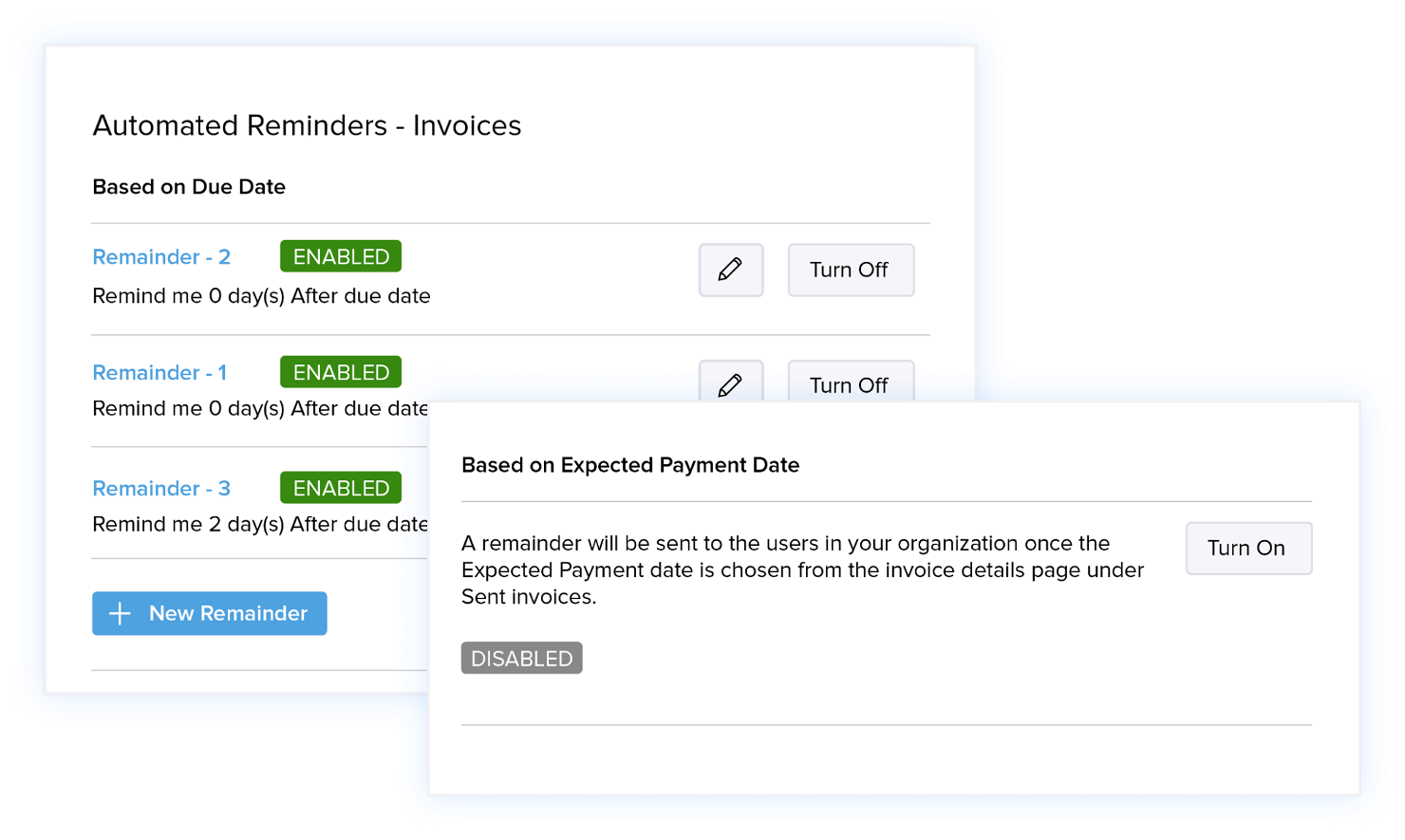10 Best Accounts Receivable Automation Software Shortlist
Here's my pick of the 10 best software from the 20 tools reviewed.
Our one-on-one guidance will help you find the perfect fit.
Accounts receivable automation software helps finance teams accelerate invoice creation and delivery, reduce days sales outstanding (DSO), minimize manual errors, and cut administrative overhead. For accounting leads and finance managers, the right solution turns receivables into a more predictable, efficient, and error-resistant process.
With a background in digital software and financial management, I’ve helped CFOs and finance leaders buried in spreadsheets, chasing down payments, or stuck with tools that won’t scale. I know how exhausting it is to fix broken AR processes while closing the books, and how tough it is finding software that truly delivers.
That’s why I’ve spent hours reviewing platforms, digging into user feedback, and testing features to surface the most reliable accounts receivable automation tools available. If you’re ready to bring clarity and control to your AR process, this list is a strong place to start.
What Is Accounts Receivable Automation Software?
Accounts receivable automation is the use of software to streamline how businesses invoice customers, track outstanding payments, and collect money owed.
It automates manual tasks like sending invoices, reconciling payments, and following up on overdue accounts. This helps companies get paid faster, reduce errors, and improve cash flow.
Businesses use accounts receivable automation to save time, lower DSO (days sales outstanding), and increase financial visibility, all without relying on spreadsheets or manual follow-ups.
| Tool | Best For | Trial Info | Price | ||
|---|---|---|---|---|---|
| 1 | Best for real-time forecasting capabilities | Free demo available | From $149/month | Website | |
| 2 | Best for managing global receivables | Free demo available | Pricing upon request | Website | |
| 3 | Best for built-in accrual automation | 14-day free trial | From $25/month | Website | |
| 4 | Best for flexible payment options | Free trial + free plan available | From $18.50/month + $8/user/month (billed annually) | Website | |
| 5 | Best for small teams | 30-day free trial | From $6.30/month (billed annually) | Website | |
| 6 | Best for simple invoicing | 30-day free trial | From $2/month (for 3 months, then $20/month) | Website | |
| 7 | Best for B2B businesses | Free demo available | From $15/month | Website | |
| 8 | Best for simple integrations | Free trial + free plan available | From $15/month (billed annually) | Website | |
| 9 | Best for credit and risk management | Free demo available | Pricing upon request | Website | |
| 10 | Best for AR & AP automation | 30-day free trial | From $29/user/month | Website |
-

LiveFlow
Visit WebsiteThis is an aggregated rating for this tool including ratings from Crozdesk users and ratings from other sites.4.9 -

Float Financial
Visit Website -

Vena
Visit WebsiteThis is an aggregated rating for this tool including ratings from Crozdesk users and ratings from other sites.4.5
Overview of the Best Accounts Receivable Automation Software for 2025
Based on a combination of features like user-friendliness, functionality, and value, these are the best accounts receivable automation solutions on the market today.
Centime is a comprehensive financial management tool that offers advanced solutions to streamline and enhance the accounts receivable process for businesses. Automate your accounts receivable and accounts payable and monitor your cashflow all in one platform.
Why I picked Centime: I chose Centime for accounts receivable automation because it provides a robust solution that enhances collections effectiveness, reduces overdue payments, and leverages AI to predict cash inflows and payment delays. This tool is particularly beneficial for businesses looking to optimize working capital and understand future cash flows for overall financial health.
Centime Standout Features and Integrations:
Standout features include accounts receivable automation, cash flow forecasting, working capital credit solutions, KPI tracking, and more.
Integrations include NetSuite, QuickBooks, and Sage Intacct.
Pros and cons
Pros:
- Integration with banking and CRM systems
- Real-time cash flow forecasting capabilities
- Automated triggers for managing accounts receivables
Cons:
- May be expensive for smaller businesses
- Learning curve for new users
DualEntry is an AI-native ERP platform built for mid-market businesses looking to automate accounts receivable (AR) processes. It helps you handle complex financial structures, multi-currency invoicing, and AR tasks with speed and accuracy.
Why I Picked DualEntry: I picked DualEntry because it offers AI-powered automation that simplifies key AR workflows like invoice generation, payment matching, and reconciliation. The platform’s auto bank matching feature saves you time by aligning transactions without manual intervention. I also like its multi-currency support, which is essential if you manage global receivables. DualEntry’s real-time dashboards keep your AR status visible, so you can track outstanding payments with confidence.
DualEntry Standout Features and Integrations
Features include recurring invoicing, AR aging reports, and AI-driven Copilot suggestions that help categorize and process payments efficiently.
Integrations include BambooHR, Bill.com, Brex, Deel, Google SSO, Gusto, HubSpot, Ramp, Rippling, Salesforce, Stripe Billing, and Stripe Invoicing.
Pros and cons
Pros:
- Automated revenue recognition ensures compliance with standards
- Supports multi-entity and multi-currency operations
- Advanced AI features help with complex accounting tasks
Cons:
- As an ERP, it may offer more features than needed for simpler accounting needs
- Customization options require careful setup
Puzzle.io is a modern accounting platform built for startups and small businesses. Its primary focus is using artificial intelligence (AI) to automate key financial workflows, with accounts receivable (AR) automation offered as part of its broader financial operations toolset.
Why I picked Puzzle.io: I included Puzzle.io because its built-in accrual automation and AI-powered bookkeeping reduce the manual work involved in managing accounts receivable. It connects with payment processors like Stripe to sync invoices, apply revenue recognition rules, and automate reconciliations without spreadsheets. You get real-time visibility into cash flow as invoices are issued and payments come in, with AR aging reports available for Stripe invoices to track outstanding balances. By automating invoice management and payment tracking, it can help you stay ahead on collections and customer accounts.
Puzzle.io Standout Features and Integrations
Standout features include variance analysis tools that help you flag and review unexpected revenue variances, dashboards with cash runway metrics for more informed financial planning, and expense breakdown views that show where cash is being used across the business. Together, these features give you a clearer picture of how AR fits into your broader financial health.
Integrations include Ramp, Brex, Stripe, Rippling, Mercury, Every, Gusto, Deel, Central, Bill.com, Runway, and Causal.
Pros and cons
Pros:
- Automates revenue recognition and expense categorization
- AI improves categorization accuracy over time
- Supports both cash and accrual accounting
Cons:
- Free trial requires users to connect a bank account
- Smaller integration ecosystem compared to ERP tools
New Product Updates from Puzzle.io
Puzzle.io's Automated PDF Statement Loading
Puzzle.io has introduced automated PDF statement loading for Meow, streamlining the reconciliation process by eliminating manual downloads and uploads. For more details, visit Puzzle.io Product Updates.
Melio is a payment platform designed to simplify the process of paying and getting paid for businesses. It allows users to pay vendors, suppliers, and any business bills, as well as send invoices and receive payments online.
Why I picked Melio: Melio offers flexible payment options, allowing customers to pay via credit card or ACH bank transfer, instant transfer, and mail cheques. This flexibility can lead to faster payment cycles and improved cash flow for businesses. The platform also offers a personalized payment page link, enabling businesses to add their unique link to business cards, email signatures, or websites, making it easier for customers to initiate payments.
Melio Standout Features and Integrations:
Standout features include approval workflows, pay over time, bill bundling, role and permission assignment, international payment support, and a mobile app for payments on the go.
Integrations include QuickBooks, Xero, and Amazon Business.
Pros and cons
Pros:
- Offers deferred payment options
- Automated bill capture
- ACH bank transfers are completely free to send
Cons:
- International payments can only be made in USD and are limited to bank transfers or Mastercard credit cards
- Occasional payment delays with ACH transfers
Freshbooks is an invoicing and accounting software designed for small businesses, solopreneurs, and freelancers. Its features are relatively simple, and that’s the point: It’s easy to use, even for users with no accounting experience. And it supports custom invoicing, estimates, built-in time tracking, and other features that contractors will find useful.
Why I picked Freshbooks: I selected Freshbooks primarily because it’s cheap and easy to use. While it lacks some of the bells and whistles that some major competitors offer, Freshbooks is a genuinely simple platform that’s perfect for sole proprietors and freelancers.
Freshbooks Standout Features and Integrations:
Standout features include all-in-one functionality for invoicing and basic accounting, as well as built-in time tracking, professional invoicing, and integrated payments.
Integrations include Gusto, Outlook, Indeed, Gmail, HubSpot, and more.
Pros and cons
Pros:
- Low-cost plans with transparent pricing
- All-in-one invoicing and accounting functionality
- Simple UI (even for non-accountants)
Cons:
- Lacks financial insights and advanced data analytics
- Limited functionality for large firms
New Product Updates from FreshBooks
FreshBooks' Key Updates: Manual Bank Creation and More
FreshBooks introduced key updates that include manual bank account creation, historical transaction imports, improved bank connections, financial lock, and streamlined payroll management. For more details, visit FreshBooks Product News.
Xero is a cloud-based accounting platform that combines AR, AP, bookkeeping, and more. It targets the small business and contractor crowd, offering a relatively simple solution to meet the needs of smaller businesses.
Why I picked Xero: I selected Xero because it’s super simple to use for invoicing, automated invoicing, and integrated payments. Xero’s mobile app is also useful, particularly for its receipt capture feature.
Xero Standout Features and Integrations:
Standout features of Xero include simple integration with payment processors, automated invoicing, and basic accounting functionality.
Integrations include Gusto, Stripe, HubSpot, Shopify, MailChimp, and more.
Pros and cons
Pros:
- Integrated payments
- Mobile app
- Budget-friendly
Cons:
- Limited reporting features
- ACH payment fees
EBizCharge is a platform that helps B2B businesses get paid faster by automating payments and syncing them with their ERP or accounting systems. It supports credit card and eCheck payments across email, web, mobile, and in-person channels.
Why I picked EBizCharge: I picked EBizCharge because it helps automate key accounts receivable tasks like invoice creation, editing, and payment collection. You can sync invoices with your accounting system and let customers pay through online portals or emailed links. It supports recurring billing, auto-pay, and saved payment methods to reduce manual work. Payments are even automatically reconciled, cutting down on errors.
EBizCharge Standout Features and Integrations:
Standout features include customer profile management, email pay, sales order preauthorization, filtered data views, transaction history access, CSV export, secure tokenization, and PCI compliance.
Integrations include Acumatica, QuickBooks Desktop, QuickBooks Online, NetSuite, Microsoft Dynamics, Magento, BigCommerce, Salesforce, Zoho CRM, WooCommerce, Volusion, and Shopify.
Pros and cons
Pros:
- Integrates well with accounting platforms
- Easy invoice payment for customers via portals
- Secure card data storage with tokenization
Cons:
- Initial setup can be time-consuming
- Limited language support
Zoho Books is a cloud-based accounting platform that handles invoicing, AP, bookkeeping, inventory management, and more. It’s designed to be an all-in-one platform and competes with the likes of QuickBooks and Sage Intacct. With that said, its jack-of-all-trades approach means that it lacks some of the advanced AR automation features offered by some of the other tools on this list.
Why I picked Zoho Books: I picked Zoho Books primarily because of its user-friendliness, both in the software’s UI and in its ease of use for integrating with third-party apps and tools.
Zoho Books Standout Features and Integrations:
Standout features include customizable reminders and customer communications, inventory management tools, simplified vendor and customer portals, and more.
Integrations include payment gateways (PayPal, Stripe, etc.), internal Zoho apps, document software, and over 500 other apps via Zapier.
Pros and cons
Pros:
- Transparent and affordable pricing
- All-in-one cloud accounting platform
- Easy to use and integrate with other apps
Cons:
- Not suited for large firms
- Lacks native integrations with ERP systems
BlackLine is a unified cloud accounting platform for mid-sized to large firms. It’s designed to help finance and accounting teams focus on higher-value activities by streamlining (and automating) as many manual processes as possible—and by providing excellent forecasting and analytics tools.
BlackLine automates many key components of the AR process, from invoicing and payment matching to past-due collections and dispute management.
Why I picked BlackLine: I selected BlackLine primarily because of its risk management and credit risk analysis tools. BlackLine uses unified customer data to help teams gauge credit risk in real-time.
BlackLine Standout Features and Integrations:
Standout features of BlackLine include real-time risk profiling to help firms use existing data to gauge credit risk (and set credit terms). It also features automated collections management, instant payment/invoice matching, and enhanced AR intelligence tools.
Integrations include other BlackLine products along with ERP systems from NetSuite, SAP, Oracle, Microsoft Dynamics, and more.
Pros and cons
Pros:
- Efficient internal communication tools and customer interaction protocols
- Advanced tools to assess credit risk, set credit terms, and manage disputes and deductions
- Excellent analytics and AR intelligence insights
Cons:
- Opaque pricing
- Overkill for smaller firms
Bill (formerly branded as Bill.com) is an accounts payable and accounts receivable platform that’s fully web-based. It’s most popular as an AP tool, but it has expanded to cover AR as well—and offers ample automation features in both categories. It integrates with most financial and business software and offers bi-directional syncing with most major accounting platforms.
Why I picked Bill: I selected Bill because it offers both AP and AR in one platform, with innovative automation features in both departments.
Bill Standout Features and Integrations:
Standout features of Bill include the combination of AR and AP in one platform, which helps managers oversee a more complete financial picture of money coming in and out. It also offers the option to send paper invoices via mail directly from the Bill platform.
Integrations include QuickBooks, Xero, NetSuite, Sage Intacct, Microsoft Dynamics, and more.
Pros and cons
Pros:
- Simple integrations and widespread bi-directional syncing with most financial tools
- Transparent and affordable pricing
- Unified platform for AR and AP
Cons:
- Requires external accounting solution
- Additional fees for transactions
Other AR Automation Software Options
Didn’t find what you were looking for? Here are some other good options for automating accounts receivable processes.
- SoftLedger
For custom billing
- Xledger
For multi-entity financial management
- Growfin
For real-time account monitoring
- Billtrust
For automating credit decisions
- LockStep Receivables
For automating customer communications
- Sage Intacct
For built-in compliance support
- QuickBooks Online
For small businesses
- Redwood Finance Automation
Flexible solution with custom batch scripting
- SAP S/4HANA
Cloud ERP with AR automation features
- HighRadius
For AI-driven automation
Selection Criteria for Accounts Receivable Automation Software
I used the following selection criteria to develop my list of the best accounts receivable automation software for this article:

Core functionality
At its core, AR automation software should enable your firm to:
- Create, send, and monitor invoices
- Manage customer account credits and payments
- Process transactions automatically
- Match invoices to credits and customer payments
- Deliver analytics and reports on the current status of receivables
- Build custom workflows to define rules, exceptions, and best practices for AR processing
- Integrate with existing accounting and ERP systems
AR automation software should also enable these processes with minimal input required from accounting and finance teams. As the name suggests, AR automation software is specifically designed to improve efficiency by increasing the percentage of AR workflow that can be automated.
Key features
Here are some specific unique features that I looked for in AR automation software:
- Automated invoicing: Solutions should automate key processes in your firm’s invoicing system, ideally by integrating with existing systems, like CRMs and POS systems.
- Paperless billing and payment reminders: Modern AR automation should be primarily digital. I focused on tools with integrated paperless billing, invoicing, reminders, and receipt distribution.
- Payment processing: AR automation software should also be able to handle payments from customers, either directly or through third-party integrations.
- AR intelligence & reporting: AR automation software should ideally also provide detailed reporting and AR intelligence data to help managers oversee the process, track long-term trends, and access real-time snapshots of receivables.
- Disputes, deductions, & collections management: Dispute resolution, debt collections, and deductions are an inevitable part of managing receivables. A good AR automation software will help to automate certain elements of this process, helping to reduce hands-on time requirements and ideally helping maintain better relationships with customers.
Usability
The usability of internal tools is vital. A solution won’t actually save your team time if they can’t figure out how to use it effectively. Some legacy AR systems are notoriously difficult to use for new users, so I focused on tools with intuitive UIs and good ratings for usability.
Fortunately, AR automation tools generally require less ongoing maintenance once workflows have been established and the solution is fully integrated and deployed with existing systems.
Integrations
Integrations are vital for efficient automation. AR automation tools should, at a bare minimum, integrate with your firm’s existing accounting solution. Ideally, tools should also integrate with solutions for CRM, ERP, and CPM. For retail and e-commerce firms, integrations with POS systems are also important.
Overall Value
AR automation software is designed to save teams time, which in turn saves money. But for smaller firms or companies with fewer receivables, it’s important to consider how much these tools could potentially improve AR workflows compared to the cost of the software.
People Also Ask
Below you can find answers to some common questions people have about AR automation software.
What aspects of AR management can be automated?
Accounts receivable tasks that can be automated or partially automated include invoicing, payment reminders, payment matching, early payment incentives (and late fees), payment processing, and elements of the dispute resolution and deduction management processes.
Is dedicated accounts receivable software necessary?
Not necessarily. Most accounting software solutions offer basic accounts receivable functionality, and in-house accounting teams can handle AR tasks internally. However, AR automation software can help teams save time and can potentially improve AR efficiency. For large firms and any company with high transaction volume, software with accounts receivable automation functionality is recommended.
Summary
Automating key accounts receivable tasks can free up significant resources within your organization.
Even if you’re already utilizing general accounting software like QuickBooks, adding a dedicated AR automation solution is worth looking into.
For more corporate finance insights, sign up for our newsletter to get the latest tech industry news and advice from financial leaders.

























